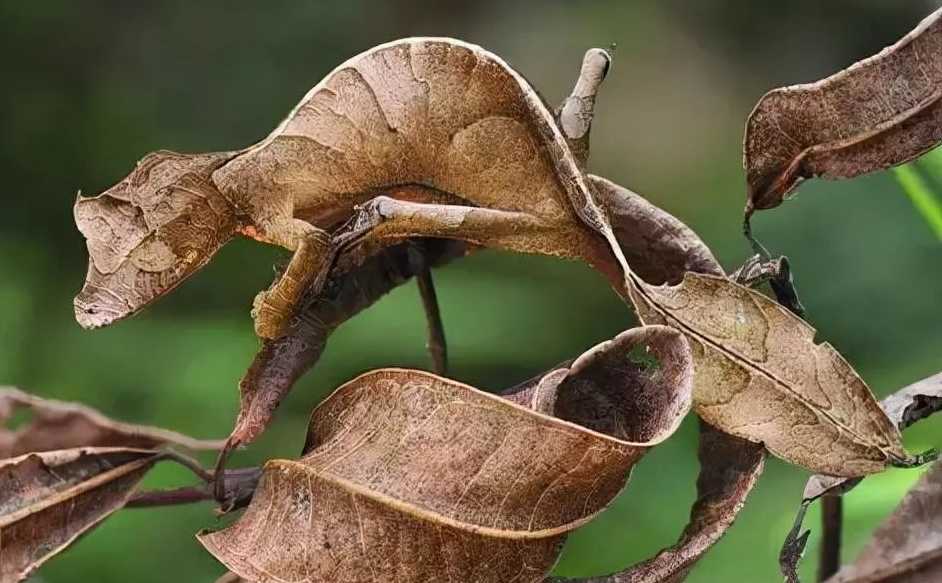The Satanic Leaf-Tailed Gecko: A Master of Camouflage Named for Its Dead-Leaf Tail
Native to the rainforests of Madagascar, the Satanic leaf-tailed gecko (Uroplatus phantasticus) earns its dramatic name from a tail that perfectly mimics a decaying leaf—ripped edges, veins, and even brownish "spots" that blend seamlessly with forest litter. This nocturnal reptile, one of the most iconic examples of evolutionary camouflage, has captivated herpetologists and nature enthusiasts with its otherworldly appearance and cryptic lifestyle.

Source: Images from the Internet, if there is any infringement, please contact the removal of
A Tail That Defies Reality: Adaptations for Deception
The gecko’s most striking feature is its broad, flattened tail, which mirrors the texture, color, and shape of a dried leaf. Jagged edges resemble tears from insect bites, while pigmentation ranges from olive-green to reddish-brown, often with blotches that mimic fungal growth. This tail, combined with a body covered in rough, bark-like scales, allows the gecko to cling to tree trunks or lie motionless on the forest floor, invisible to predators and prey alike. Large, lidless eyes with vertical pupils enhance night vision, while toe pads equipped with microscopic hairs let it climb smooth surfaces without a sound.
Nocturnal Hunter and Cryptic Behavior
Active at night, the Satanic leaf-tailed gecko preys on insects, spiders, and small vertebrates, using its camouflage to ambush unsuspecting prey. During the day, it rests motionless, often positioned at an angle to resemble a fallen leaf, with its tail curled to complete the illusion. If threatened, it may open its bright red mouth, hiss, or drop its tail (which regenerates over time) to distract predators. Despite its ominous name, it is harmless to humans, relying entirely on stealth for survival. Females lay just two eggs per clutch, burying them in leaf litter or under bark—a risky strategy that underscores the importance of perfect camouflage for offspring.
Conservation Challenges in Madagascar’s Rainforests
Endemic to Madagascar, this gecko is listed as Endangered by the IUCN, facing grave threats from deforestation and habitat fragmentation. Logging, agriculture, and charcoal production destroy its forest home, while illegal collection for the pet trade compounds the crisis. Conservation organizations work to protect remaining rainforests and promote sustainable practices, emphasizing that the gecko’s survival is tied to the health of Madagascar’s unique ecosystems. Its remarkable camouflage, evolved over millions of years, serves as a reminder of nature’s ingenuity—but also of the fragility of species that depend on specific, threatened habitats.
For biologists, the Satanic leaf-tailed gecko is a living testament to natural selection’s power to craft perfection in disguise. Its leaf-like tail, once thought to inspire its "Satanic" moniker due to its eerie realism, now serves as a symbol of Madagascar’s irreplaceable biodiversity. As deforestation threatens to turn this living leaf into a mere fossil, the gecko’s silent presence in the rainforest canopy stands as both a marvel of adaptation and a urgent call to protect the wild places where such evolutionary wonders still thrive.
-------- END --------






